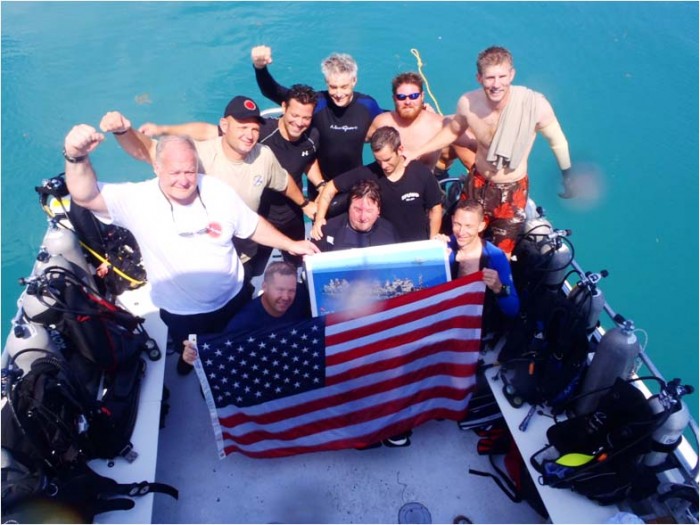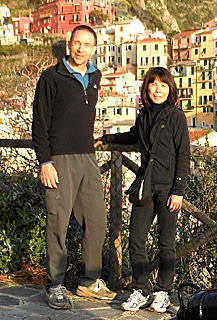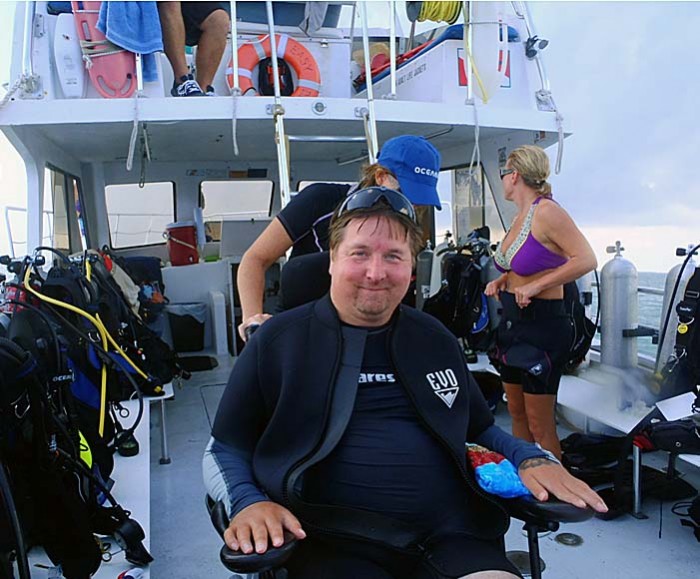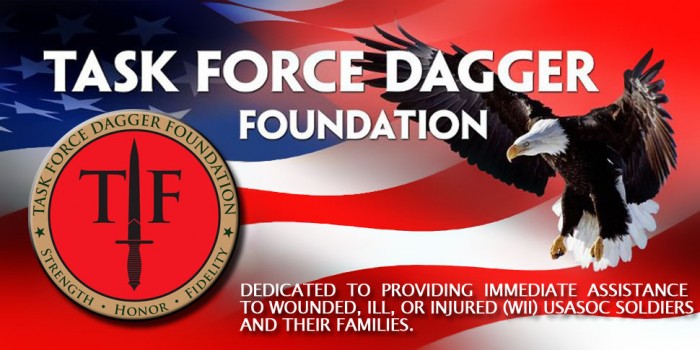Task Force Dagger

Unique Group Offers Wounded Special Ops Vets Whole-Family Support and Healing
As Jack floated in the choppy waters 12 miles off Key West, a team of active-duty and retired special operations soldiers treaded water around him, balancing him carefully before one of the men took off Jack’s mask. The team watched Jack’s face for a sign

that their week of work in the pool—figuring out how to stabilize his body, manage his air flow, communicating with only eye and head movements—had paid off. When they peeled off his mask, a smile spread across Jack’s face. “This is the best day!” he
said, for the first of many times that afternoon.
That’s the kind of reaction Lexingtonians Glen and Shirley Bassett live for in their volunteer work with Task Force Dagger (TFD), a not-for-profit founded in 2009 to provide assistance to wounded special operations veterans and their families.
Glen Bassett is a retired colonel and former recon Marine, so when a Raytheon colleague of his, Keith David, told him about his unique idea for a wounded warrior project that would offer exciting rehabilitative activities to veterans and their families, Bassett was all in. Other groups were stepping forward to help wounded veterans, but no other group seemed to be including families this intensely and physically in its rehabilitative work with veterans.
1.6 million veterans have served in the post 9-11 wars, our nation’s longest. Approximately 6,400 Americans have died in those wars. But wounded soldiers have been kept alive at an unprecedented rate in the post 9/11 period; an Associated Press report this fall cited a 95% survival rate. (By MARILYNN MARCHIONE 05/27/12 01:40 PM ET, http://www.huffingtonpost.com/2012/05/27/iraq-afghanistan-veterans-disability-benefits_n_1549436.html). However, the increase in the number and complexity of injuries requiring extensive rehabilitation is also unprecedented, and many groups have stepped in to address the needs of these returning veterans.

A former special operations soldier himself, David named TFD after the first special operations team that went into Afghanistan after 9/11. His goal was to offer immediate assistance to wounded or ill special ops soldiers and their families. But David also wanted to offer rehabilitative activities that tapped into the spirit of adventure so many soldiers share. And he understood that the injury to the soldier affects the entire family; he wanted to include the wounded warrior’s family in whatever TFD offered. David hoped that by experiencing challenging activities together the whole family would build new skills, strengthen bonds, and, well, have a blast as they all healed.Although TFD events include a variety of activities, much of the recreation occurs in the water, a medium that increases ease of movement for the wounded soldiers. “Water is liberating for a person who’s lost mobility or a limb,” says Glen Bassett. “They’re just…Wow! A guy missing two legs gets around great. You can put fins on prosthetics! These guys are used to doing exciting things. Now, they can dive again—or even learn to for the first time. They can do thrilling things again, and we can teach their families how to do it with them.” Family members and caregivers train along side the soldiers, and earn their diving certification in the process of learning to assist their soldiers in the water, as they themselves learn to accommodate their blindness, loss of limbs or mobility. Jack’s story is just one example of what a week of such attentive rehabilitation can mean to injured soldiers and their families.
Bassett was one of the four members of the team helping Jack get comfortable in the water again that day. Jack had suffered a broken neck in an accident during his last tour of duty, and had lost all mobility and feeling below his neck. He’d been an Air Force special operations combat diver, specializing in getting behind enemy lines and guiding aircraft with radio and lasers. Now, Jack was being guided back to a sport he’d loved before his accident. All that week, as the team practiced in the pool, Jack talked about going even deeper than planned on their 60-foot dive to the top deck of a sunken US Navy ship off the coast of Key West. The ship lay under 140 feet of water, with the top deck at 60 feet, the top of the mast at 30. The goal was to get to the deck at the 60-foot depth, if things went well.
On the day of the dive, the tail end of a tropical storm had stirred up the sea. The buoy line marking the dive site was at a 45-degree angle, the current very fast, about 1.5 knots. There were other wounded soldiers on the same dive. Jack and his team looked at each other and debated, Should we do this? But Jack was adamant. No way was he not diving. They went in.

Bassett was on Jack’s right side, another teammate on his left, another preparing to lock arms around Jack and stay face to face so he could read Jack’s eye and head signals. The fourth helper on the team would hover over the other four men to watch for any trouble. Bassett and his teammates let out their own air, then Jack’s, so they could begin to sink. With one hand Bassett grabbed the rope l
eading down from the buoy to the sunken ship. With his other hand, he held the soldier who was holding Jack.
As the team descended, the teammate reading Jack’s eyes knew when to stop to check Jack for signs that he needed to release pressure. At that signal, the helper would hold Jack’s nose so he could blow and equalize the pressure in his head. Slowly, the team dropped lower into the ocean. The pressure is greater at the lower depths, and in such a strong current, the team was going through their air faster than expected. Bassett kept a close eye on the supply.
They reached the mast, then the pilothouse of the wreck, where the current slowed a bit. Finally, they reached the top deck at 60 feet. A 6-foot barracuda hung just off to one side watching them. Jack motioned with his eyes. He wanted a better look. As the team watched the barracuda watching them, they were celebrating inside. They’d made it to 60 feet without killing anybody. Mission accomplished. Everybody was smiling. They gave the hand signal to start going up. Jack shook his head. He wanted to keep going. Now, the team realized Jack hadn’t been kidding all that week when he told them he wanted to go to 90 feet.
The men continued to drop farther down into the ocean. Finally, they hit the lower deck at 90 feet. Bassett shot Jack a look and signaled: 90 feet. Can we go up? Jack was beaming. They could begin their slow ascent now, stopping every 30 feet for five minutes to let the nitrogen bubbles out of their bloodstreams in order avoid the bends. “The whole time we were getting Jack back on the boat, he just kept talking and talking and talking. He was just so happy,” Bassett says.
The team took Jack, his wife, and his caregiver out for one more dive that week. This time, they dove in “only” 25 feet of calm water over a coral reef just off Key West. By then, Jack was totally comfortable in the water. All the team had to do was hand him off in the water to his wife and caregiver and watch as they had a great time together.
This is a unique program,” Bassett says. “Most programs focus on the injured soldier alone. But the soldiers’ caregivers and family members are a major factor in successful healing. TFD works with the whole caregiving unit around the injured soldier; it makes all the difference, and they’re all so appreciative.”
TFD operates entirely on private donations and some corporate help—Raytheon is one backer and American Airlines, which discounts the soldiers’ airfare for the event, another. Once TFD determines the number of volunteers who can attend the Key West event, they tell Special Operations Command (SOCOM) the number of injured soldiers they can host, and SOCOM selects the list for that year’s program.
This year, TFD expanded the program to include Gold Star families—families who have lost a soldier during his or her service in the military. “They’re going through a different kind of healing,” Bassett says. Some of the Gold Star families’ soldiers had trained at the Key West Special Forces Underwater Operations School where the TFD held the program’s final activities this summer. “Two of the boys whose fathers had died, had never dived with their dads. But they earned their diving certificates right there—at the same pool—that day. I’ll never forget that ceremony.”
Nor will those boys, or the many soldiers and their families who shared that moment with a group of devoted, and highly skilled, volunteers.

